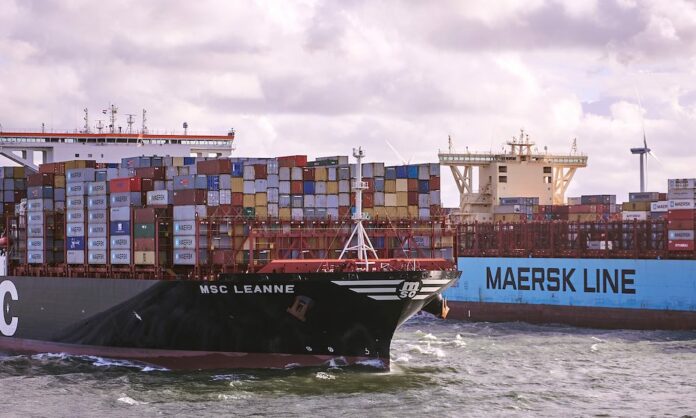The liner shipping industry is undergoing a significant reshuffle tonight as several companies are switching alliances on the main east-west trade routes. This reshuffle, the largest in a decade, is set to redefine the landscape of the industry.
THE Alliance is set to transform into the Premier Alliance, with Ocean Network Express (ONE), HMM, and Yang Ming Marine Transportation as partners. Additionally, Mediterranean Shipping Co (MSC) will be collaborating with THE Alliance to fill gaps on the Asia-Europe tradelanes. MSC’s decision to break away from Maersk in the 2M vessel sharing agreement is a bold move towards operating independently. Consequently, Germany’s Hapag-Lloyd will be leaving THE Alliance to join forces with Maersk in what is being called the Gemini Cooperation.
The Ocean Alliance, consisting of COSCO, OOCL, CMA CGM, and Evergreen, will remain the only alliance group intact after February 1. According to analysis from Linerlytica, an Asia-based container shipping consultancy, the Ocean Alliance will have the largest market share and widest market coverage in the industry this year. Data from Alphaliner reveals that the Ocean Alliance will deploy approximately 390 container vessels with a nominal capacity of nearly 5 million teu.
Linerlytica’s analysis indicates that the Ocean Alliance will have a dominant position on the transpacific route, with 15 sailings to the west coast and eight sailings to the east coast. The alliance will also offer the widest coverage to North Europe with the addition of a seventh service, matching MSC’s coverage. In terms of sailings to the Mediterranean, MSC is expected to remain the leading carrier with six weekly services.
On the other hand, the Gemini Cooperation, comprising Maersk and Hapag-Lloyd, is projected to be the smallest alliance with the fewest number of weekly sailings in 2025. Industry experts are closely monitoring how this alliance shuffle will unfold, with concerns about potential disruptions to schedules and the announcement of tariffs.
A recent report from HSBC highlights the impact of the alliance reshuffle on rates, suggesting that it could help maintain rates at a relatively high level in the first half of 2025. Meanwhile, analysts at Sea-Intelligence in Copenhagen believe that carriers have had sufficient time to prepare for the transition into the new alliance networks. While some operational challenges are expected during the transition, it is hoped that they will be manageable, especially given that the shuffle is taking place during the slack season post-Chinese New Year.
As the industry braces for these significant changes, it remains to be seen how the reshuffle will impact various aspects of the liner shipping sector. With alliances realigning and market dynamics shifting, stakeholders are closely monitoring the developments to navigate the evolving landscape successfully.
In conclusion, the reshuffle in the liner shipping industry signifies a pivotal moment in the sector’s evolution. The alliances formed and dissolved will have far-reaching implications for market share, route coverage, and operational efficiency. As companies adjust to the new alliances, it is essential for them to adapt swiftly to ensure a smooth transition and capitalize on the opportunities presented by this transformative period.




